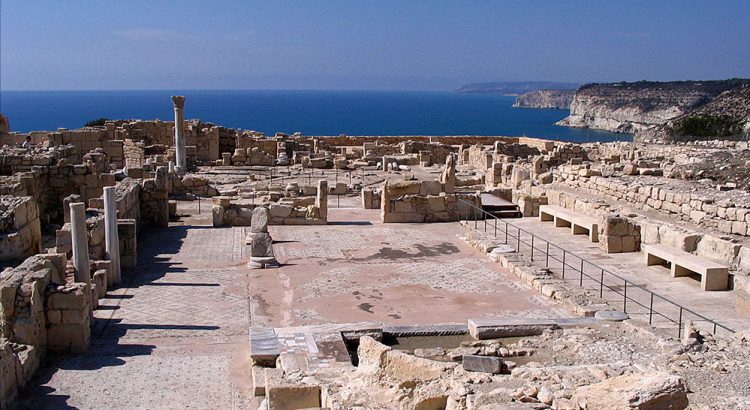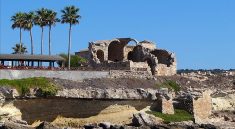The Kourion Basilica was built in the early 5th century on the foundation of a pagan temple at the edge of a cliff overlooking the entire city and the sea. It became a massive complex with baptistery, atrium, with other structures adjacent to the main church area. The mosaic floors throughout give a good indication of the size of the church.
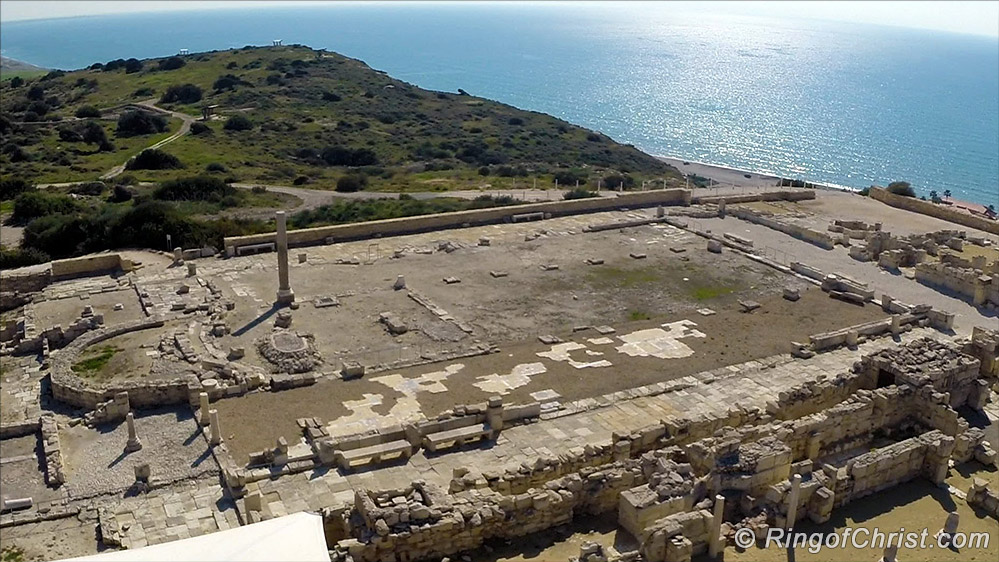
Although its proportions were longer, the basilica was similar in architecture to other 5th-century churches and basilicas. And like all the basilicas built on the island at that time, it was patterned after the St. Epiphanios Basilica in Salamis.
The building materials for the basilica came from the temple, one inscription dates back to 300BC during the reign of Ptolemy II. The ruined buildings provided all the limestone, granite, and marble needed to build the new church, and later, those same materials would be used to build Episkopi, once the basilica fell into ruins.
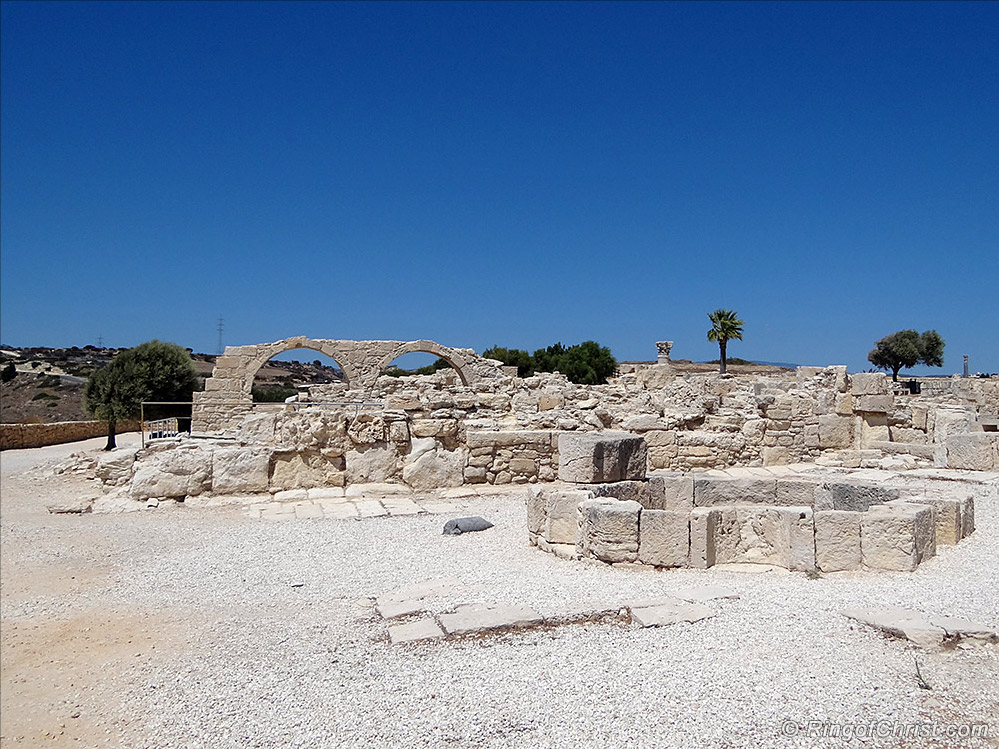
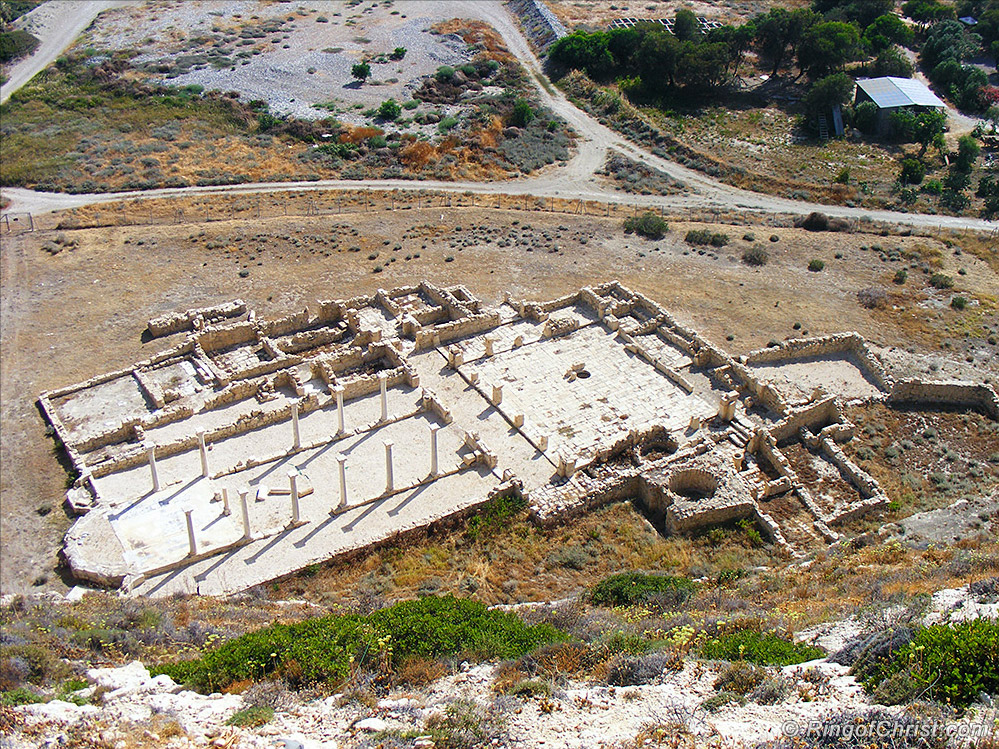
After the major earthquake of 365AD, temples were not rebuilt; majestic basilicas stood in their places. Paganism was officially over in the Empire in 380AD.
Besides the main basilica, there are two other smaller basilicas in Kourion. Panagia Limeniotissa, built in the 5th Century, is on the sea at the foot of the great cliff.
A second smaller basilica is on the north side of the Roman Road, which is the highway today, just to the east of the Roman stadium of ‘the abominable race’ as related by Barnabas in Acts of Barnabas.
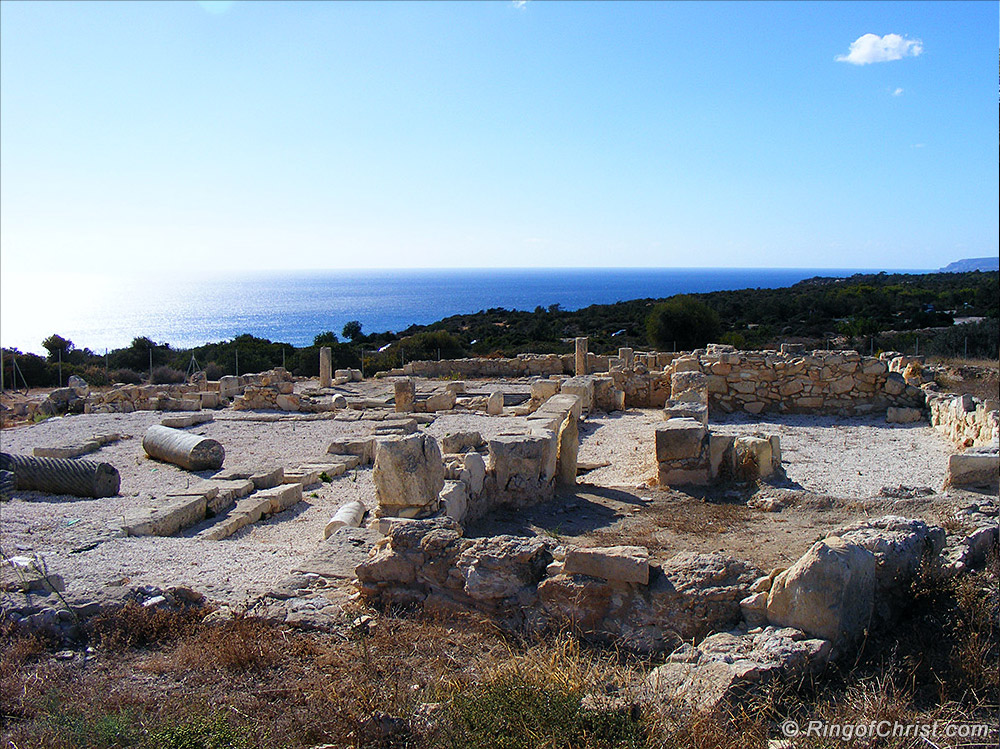
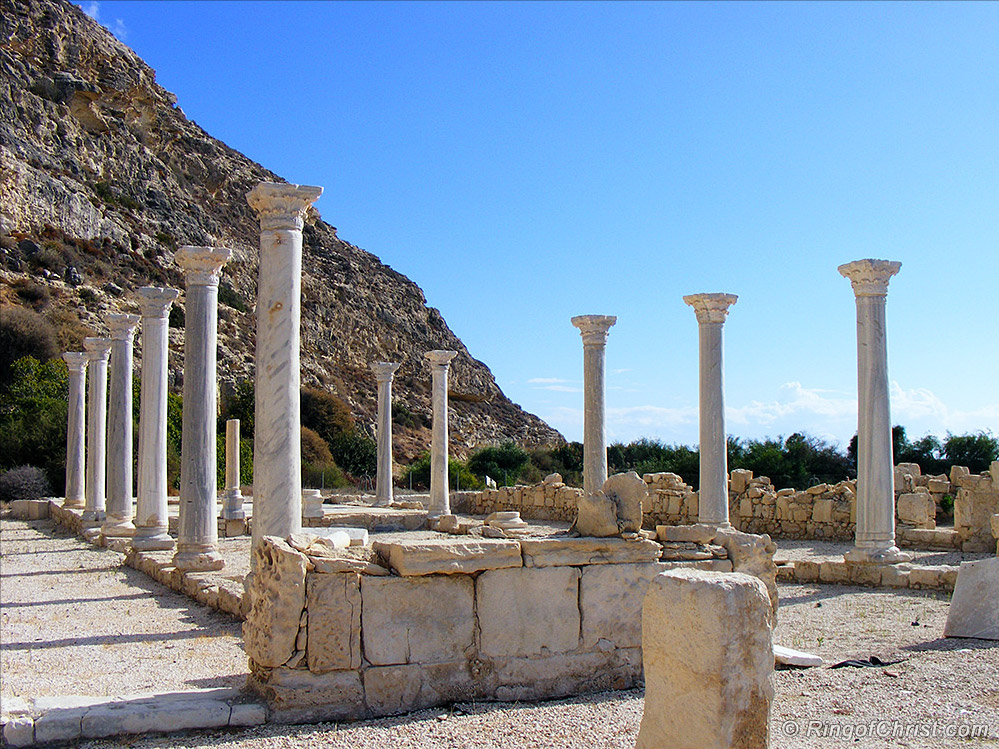
Kourion became the ecclesiastical center for Cyprus until its destruction in the late 7th century by yet another earthquake when once again the whole city was destroyed. Remains suggest that Kourion, however, was not immediately abandoned, but was still used until the 8th Century.
The ruins of Kourion became the building materials for the nearby town of Episcokpi, which became the new ecclesiastical city as the name indicates. Medieval manor complexes also used the rich source of hewn stone. Many inscriptions, capitals, column, and pavements dating to almost all the periods of Kourion have been found throughout the surrounding areas, some only fragments, because they have been reused to build new structures.

There is much of Kourion to still excavate, much more than has been excavated thus far.
